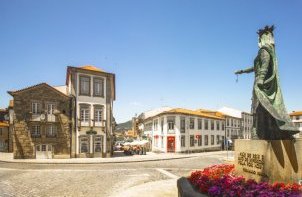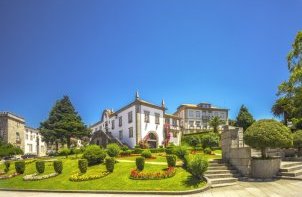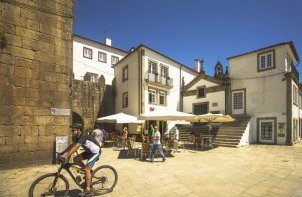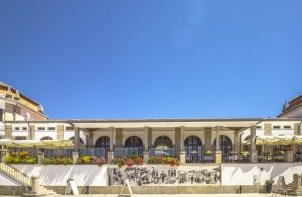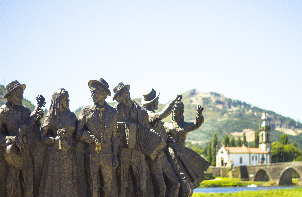The oldest Town in Portugal


© Photography: Manuel Teixeira
In Ponte de Lima, a town of stories and history, a walk through the town centre is a journey to the roots of our ancestry. Largo de Camões welcomes visitors with its Noble Fountain, completed in 1603. The nearby Bridge tempts us all to cross it. Cross the bridge and admire the beauty of the Church of Santo António da Torre Vellha (Old Tower), built in the nineteenth century and notable for the height of its tower and the gargoyles flanking it. Close by, the Chapel of Anjo da Guarda (Guardian Angel), a construction with Romanesque and Gothic roots, dated by many to the thirteenth century, will arouse curiosity for the simple and harmonious way it fits into the landscape.
Don’t return to the other bank without visiting the International Garden Festival and the picturesque outskirts of Além da Ponte (literally "Beyond the Bridge”), of undeniable architectural interest. On the left bank, back in the historic town centre, admire the São Paulo Tower, from the fourteenth century, the Pelourinho (Pillory), the Torre da Cadeia Velha (Old Jail Tower), which was still being used as a prison in the 1960s and the Arco da Porta Nova, the town gate that leads to the old Rua da Judiaria.
Before heading to another symbol of Ponte de Lima, the Avenida dos Plátanos (Plane Tree Avenue), stop for a moment at the Baroque Chapel of Nossa Senhora da Penha de França. At the end of the avenue, the Chapel of Nossa Senhora da Guia (seventeenth century) is unmissable, as is the notable complex formed by the Churches of Santo António dos Frades (fifteenth century) and Ordem Terceira de S. Francisco (eighteenth century), which houses the Terceiros Museum. Just off the Avenue is the Diogo Bernardes Theatre, a fine example of an Italian-style theatre, inaugurated in 1893, which remains as the town’s main cultural centre. Close by, the Villa Moraes, with its admirable Neoclassical-style façades, typical of the houses built by those who returned from Brazil and a welcoming and romantic park.
Back in the centre of the town, the Parish Church, rebuilt by João I, is another essential site. From there, walk up to the Paço do Marquês (fifteenth century) and visit the Military History Interpretation Centre.
We also suggest a visit to Church of Lapa, where there is an image of St. Benedict.
On Praça da República, the monuments particularly notable are of Teresa, the Countess of Portugal, and of the poet António Feijó, the Town Hall building and the Pelourinho.
The tour continues now along the narrow streets of the old town, Rua Beato Francisco Pacheco and the sixteenth century Bairro das Pereiras with its fine architecture and notable façades. There is much left to see, but we suggest ending this tour at the Chapel of Nossa Senhora da Misericórdia das Pereiras, where a sublime view of the valley and over the town can be enjoyed.
